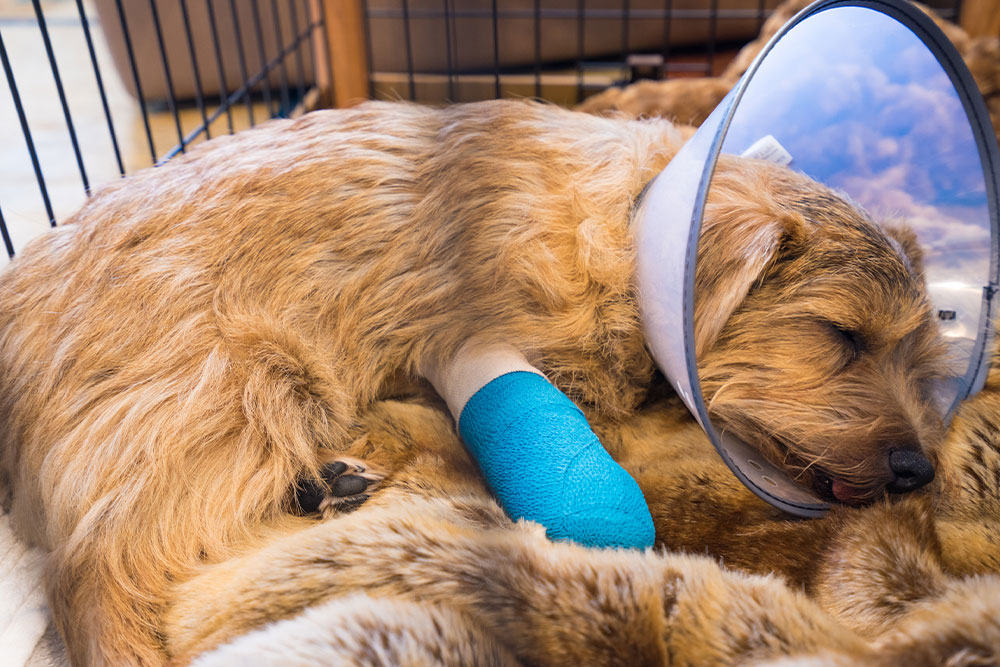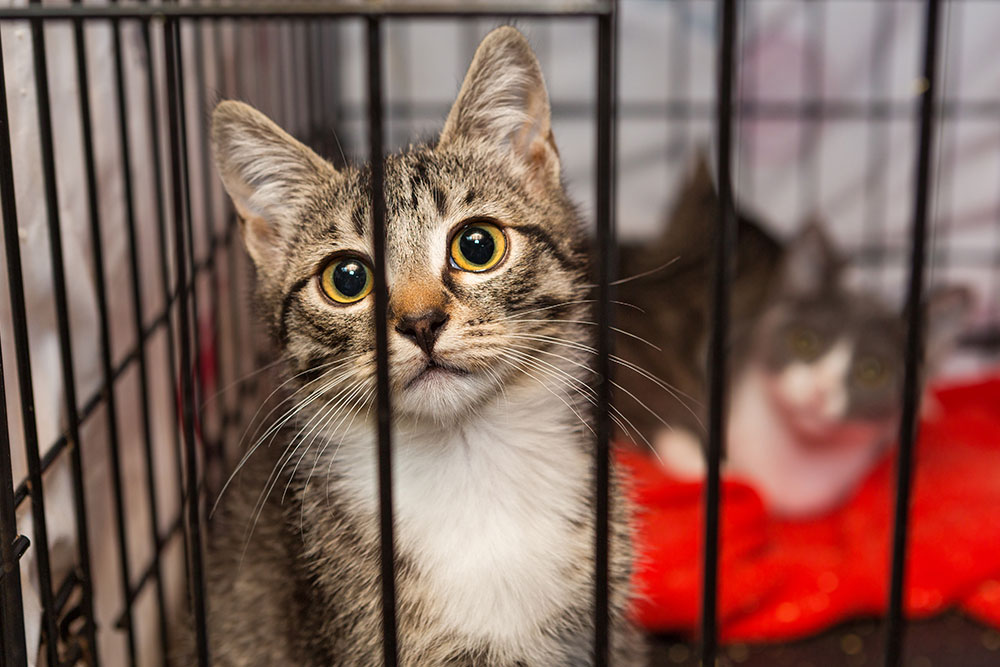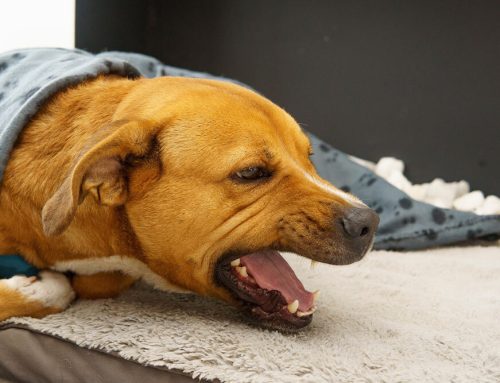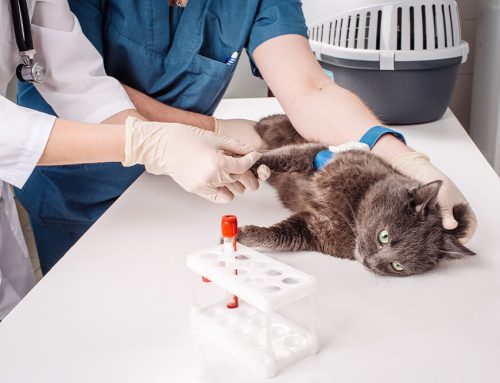Why Crate Rest and the Cone Matter After Surgery: A Guide for Pet Owners
Animal Medical Center of Marquette | Marquette, MI
Crate rest and e-collars (the infamous “cone of shame”) are often met with groans- from pets and people alike. We know it’s not fun. But when it comes to healing after surgery or injury, these tools are more than just accessories- they are essential components of a successful recovery.
At the Animal Medical Center of Marquette, we often hear the same questions from concerned pet owners: Is crate rest really necessary? Does the cone have to stay on all day? What if my pet seems miserable? Can they eat or drink with a cone on? Let’s dig in to the answers!
Why Crate Rest Matters for Post-Surgical Healing
When a pet is recovering from orthopedic surgery, soft tissue repair, or a major illness, rest isn’t just helpful- it is medically necessary. Crate rest helps:
- Prevent re-injury by limiting movement and impact
- Protect surgical sites from strain or pulling
- Promote faster, more complete healing
- Support pain management by minimizing inflammation
Without adequate rest, healing can be delayed or reversed. Pets that are allowed to run, jump, or roam too early may require repeat surgery, longer recovery times, or additional medication.
Understanding the Cone: Why It Stays On
The cone, or e-collar, may look uncomfortable, but it plays a critical role in post-op care. Pets instinctively lick, bite, or scratch at wounds and sutures. This can lead to:
- Infection
- Wound reopening
- Suture damage
- Increased scarring
In some cases, a pet can undo an entire surgical repair in a matter of minutes. The cone prevents these setbacks and protects the progress already made. For some pets, alternative e-collar options like inflatable or soft cones may offer more comfort while still providing protection, but only for certain pets- ask us first..
Setting Up a Recovery Space: Crate Comfort Basics
Your pet’s crate or recovery area should be a calm, secure retreat. Make it soothing, not stressful.
Crate Setup Checklist:
| Item | Why It Matters |
| Soft, supportive bedding | Prevents pressure sores and supports joints |
| Low noise and foot traffic | Reduces anxiety and promotes better sleep |
| Fresh water available at all times | Maintains hydration without overexertion |
| Safe access to toys or chews | Provides mental stimulation |
Avoid placing the crate near distractions like busy walkways or other pets. A quiet corner with natural light and regular visits from family members strikes the right balance between comfort and companionship.
Boredom Busters: Enrichment During Crate Rest
A physically restricted pet often experiences mental restlessness. Keeping the mind engaged helps reduce stress, destructive behavior, and separation anxiety.
Mental Stimulation Ideas:
- Food puzzles: Engage problem-solving skills while slowing down eating. Try these DIY cognitive toys for easy at-home options.
- Scent games: Hide a few treats in the crate bedding or beneath safe containers for your pet to discover.
- Safe chews: Vet-approved options help satisfy the natural urge to gnaw. For safety tips, review this guide on the potential dangers of popular dog chews.
- Cat enrichment: For feline patients, DIY enrichment toys can keep them mentally engaged without requiring physical exertion.
- Rotation strategy: Change out toys every 1–2 days to maintain novelty and interest.
- Move crates near a window with birdfeeders or people watching, if they can watch calmly
For additional ideas, Dog Enrichment Ideas offers creative and low-impact options to keep dogs engaged during recovery.
Emotional Support: Staying Connected
Healing can be lonely, especially for pets who are used to being by your side.
Ways to Stay Engaged:
- Sit near the crate during quiet activities like reading or working.
- Place a soft bed by your desk or table and use a short leash attached to a table leg to provide time outside the crate without allowing too much movement
- Offer meals by hand or in puzzles to turn feeding time into bonding time.
- Incorporate light grooming (if allowed) to reinforce routine and comfort.
- Wagon or backpack rides can help your pet experience the excitement of the outdoors without the movement
Family involvement is equally important. If multiple people share care duties, your pet continues to feel included in the household while remaining safely confined.
Behavioral Changes During Recovery
It’s not unusual for pets to show signs of frustration during the healing process. Barking, whining, digging at the crate, or refusing food can all indicate emotional stress.
How to Support Calm Behavior:
- Reward quiet, calm behavior with treats or praise.
- Ignore minor attention-seeking behaviors to avoid reinforcing them.
- Avoid punishment, which can increase anxiety. Don’t add more negativity to an already stressful time.
- Use calming tools like soft music or pheromone diffusers if needed.
For more insights on handling behavior during recovery, How to Survive Crate Rest with Your Dog offers helpful, vet-approved strategies.
Monitoring Recovery: Know When to Call
While most pets recover without complications, it is important to stay alert to any changes in health or behavior. Daily checks can help catch problems early.
Warning Signs That Warrant a Call to the Vet:
- Bleeding, swelling, or discharge from the surgical site
- Persistent vomiting or diarrhea
- Refusal to eat or drink for more than 24 hours
- Difficulty breathing or sudden lethargy
- Any damage to sutures or the incision
Our services include post-op evaluations and ongoing support to ensure every pet has a safe, complete recovery.
Frequently Asked Questions About Crate Rest
Can I take my pet out of the crate for a walk? Only if your veterinarian has cleared it. In most cases, only brief, leashed bathroom breaks are permitted until healing is further along.
My pet hates the cone. What are the alternatives? Some pets tolerate inflatable or soft cones better. Always choose options approved by your veterinarian and ensure they effectively protect the surgical site.
Can I let my pet sleep in my bed during recovery? This is usually not recommended. Unsupervised movement, jumping on or off furniture, and repositioning can increase the risk of re-injury.
How long will crate rest last? It varies depending on the procedure. Some pets require just a week, others several months. Always follow your vet’s specific guidelines and ask questions if unsure.
Supporting a Successful Recovery- Together
Recovery doesn’t have to be frustrating or lonely. With a clear plan, a little creativity, and a lot of care, crate rest and cone time can become part of the healing process- not a burden. At the Animal Medical Center of Marquette, our team is here to guide you every step of the way.
If you have questions about post-op care or notice something concerning during your pet’s recovery, contact us or request an appointment. With the right support, your pet can heal safely- and return to the activities you both love.











Leave A Comment